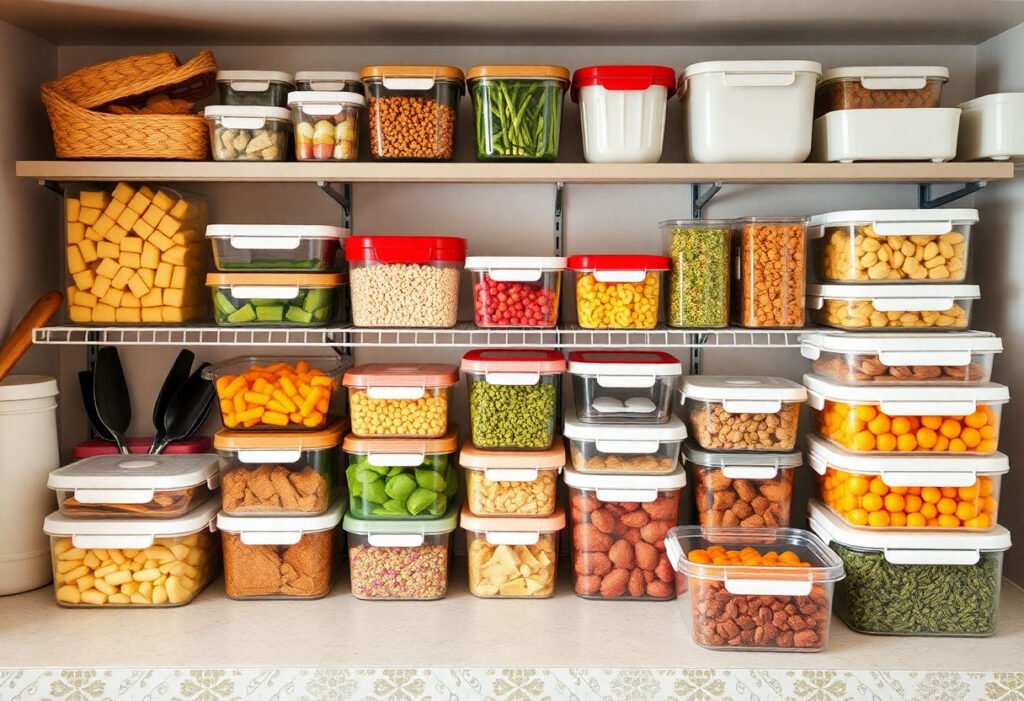In today’s fast-paced world, where maintaining food quality is paramount, selecting the right food prep storage containers plays a crucial role in preserving freshness and organization in your kitchen. This article examines vital aspects such as container materials—glass, plastic, and stainless steel—and their respective benefits and drawbacks. It provides guidance on choosing appropriate sizes and delineates the significance of airtight seals in ensuring durability and preventing leaks. Whether focusing on specialized containers for particular food items or seeking eco-friendly options, this comprehensive exploration promises to equip you with the insights needed to maximize food longevity and sustainability.
Key Takeaways
- Selecting the right food storage containers involves evaluating material options, such as glass for durability and plastic for versatility, to suit various needs.
- Proper sizing of storage containers is crucial to accommodate different food types effectively, enhancing kitchen organization and efficiency.
- Airtight seals are essential for maintaining food freshness and preventing leaks, ensuring your storage solutions are reliable and long-lasting.
- Specialized containers are designed for specific foods like produce and liquids, optimizing freshness and convenience while reducing waste.
- Eco-friendly and sustainable storage options are available for those interested in reducing their environmental impact while keeping food fresh.
Understanding Different Materials

Glass, plastic, and stainless steel are the most common materials for food prep storage containers, each presenting unique advantages and challenges.
Glass Containers: Benefits and Downsides
Glass containers are celebrated for their durability and safety. They are non-reactive, meaning they do not leach chemicals into food, making them an optimal choice for health-conscious consumers. Glass is also resistant to stains and odors, maintaining a pristine appearance. However, these containers can be heavy and prone to breakage, requiring careful handling. They are often more expensive than their counterparts, which might be a consideration for budget-conscious individuals.
Plastic Containers: Versatility and Concerns
Plastic containers offer unmatched versatility, being lightweight and available in various shapes and sizes. They are generally more affordable, making them accessible for everyday use. However, concerns about certain plastics containing harmful chemicals like BPA have made consumers more cautious. It is advisable to select BPA-free options to mitigate health risks. The capacity for plastics to absorb stains and odors over time should also be considered, as this could impact the freshness of stored food.
Stainless Steel: A Durable Alternative
While not as common as glass or plastic, stainless steel containers provide a highly durable solution. They are resistant to rust and do not retain odors, making them ideal for specific uses, such as storing perishable items. Stainless steel offers a sleek, modern appearance but may not be suitable for microwaving or viewing contents at a glance, limiting its versatility in certain kitchen settings.
Choosing the Right Sizes
Selecting the appropriate sizes for food prep storage containers is essential to maintain freshness and maximize space efficiency. When deciding on container sizes, consider the types of food you typically store and their portions. For bulk storage, such as grains or pasta, larger containers provide the necessary capacity, reducing the frequency of refilling. Conversely, smaller, portion-sized containers are ideal for packed lunches or snacks, helping manage portion control and reduce food waste.
A vital consideration is the space available in your refrigerator, freezer, or pantry. Employ a mix of sizes to allow flexible stacking and efficient use of space. Opt for containers that are rectangular or square, as these shapes maximize storage efficiency compared to circular options. Additionally, using a uniform set of stackable containers can greatly enhance organization and accessibility.
Consider investing in a container set that includes a variety of sizes. This approach ensures you have containers suitable for single servings as well as larger volumes. A well-chosen set often features nesting capabilities, which saves space when the containers are not in use.
When storing liquids or dishes that might expand, such as soups or stews, choose containers with a little extra space to prevent overflow and accommodate expansion. Some brands offer marked measurements on the sides of containers, providing a convenient way to manage portions and monitor quantities.
In summary, thoughtfully selecting a range of container sizes tailored to your specific storage needs is crucial for maintaining food freshness, minimizing waste, and efficiently organizing your kitchen space.
Importance of Proper Sealing
Proper sealing plays a crucial role in maintaining the freshness of stored food. An airtight seal not only prevents air from entering the container but also blocks out moisture and contaminants that could lead to spoilage. This is essential for maintaining the nutritional value and flavor of your food, especially for produce and meals intended for long-term storage.
The capacity of a container to seal tightly is vital for preventing leaks during transportation. Whether you’re packing a liquid-rich dish or a sauce-laden entrée, a dependable seal ensures that the contents remain secure, protecting your bags and other items from spills. This is especially significant for those who meal prep and carry food to work or school regularly.
Proper sealing also aids in extending shelf life. Foods that are shielded from oxygen maintain their freshness longer, which is particularly important for items like grains and baked goods that are susceptible to staleness. Furthermore, effective sealing can reduce food waste, a vital consideration for households looking to minimize their environmental impact and save money.
Moreover, containers with high-quality seals provide a barrier against odors. This prevents strong-smelling foods from affecting other items stored nearby and helps retain the intended flavor of the food itself. When selecting containers, it’s beneficial to assess the integrity of the seals regularly, ensuring they aren’t worn out. In sum, the choice of a container with robust sealing capabilities holds profound significance in food preservation efforts, directly impacting both quality and sustainability.
Specialized Containers for Specific Foods
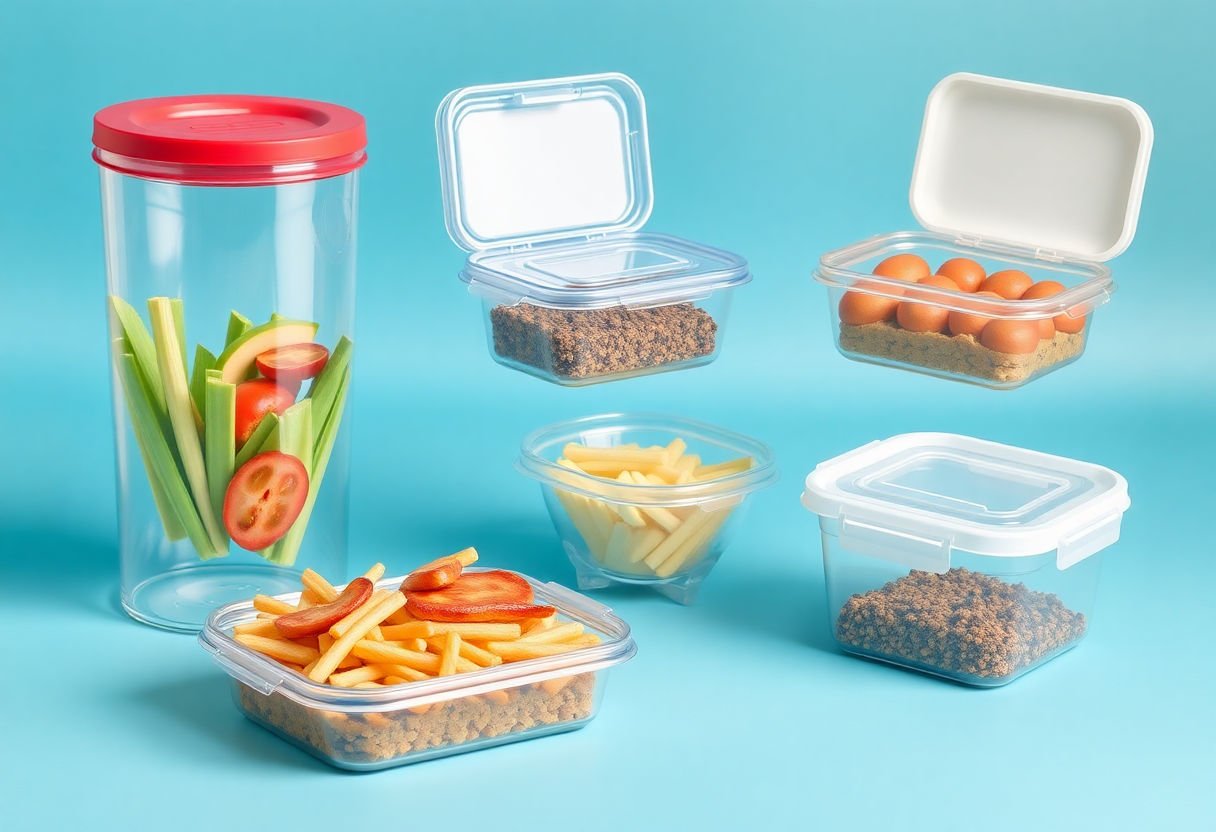
Specialized food storage containers are designed to enhance the freshness and convenience of storing specific types of food items. By utilizing customized solutions, these containers can significantly improve the longevity and quality of your stored produce, grains, and liquids.
One popular category is produce containers. These containers often feature vents or filters that help regulate airflow and moisture, which are crucial in prolonging the freshness of fruits and vegetables. For instance, containers with adjustable vents can cater to different produce types, such as leafy greens that require higher humidity levels compared to fruits.
Grains, such as rice, quinoa, or flour, benefit from containers that include airtight seals and moisture-wicking technology. These features help protect grains from pests and moisture, which can compromise quality and flavor. Additionally, some containers come with pour spouts or measurement markings, aiding in portion control and reducing mess during usage.
For liquids, specialized containers with spill-proof lids and measurement marks are highly beneficial. Whether storing homemade juices, soups, or sauces, these containers prevent leaks and overspills, ensuring safe transportation and storage. Some containers are designed to withstand temperature fluctuations, making them suitable for both freezer and microwave use.
Investing in specialized storage solutions is essential for those looking to optimize their kitchen organization and maintain food quality. Selecting the right container for specific foods not only maximizes storage efficiency but also contributes to reducing food waste by extending the freshness period of the stored items.
Top Brands and Recommendations
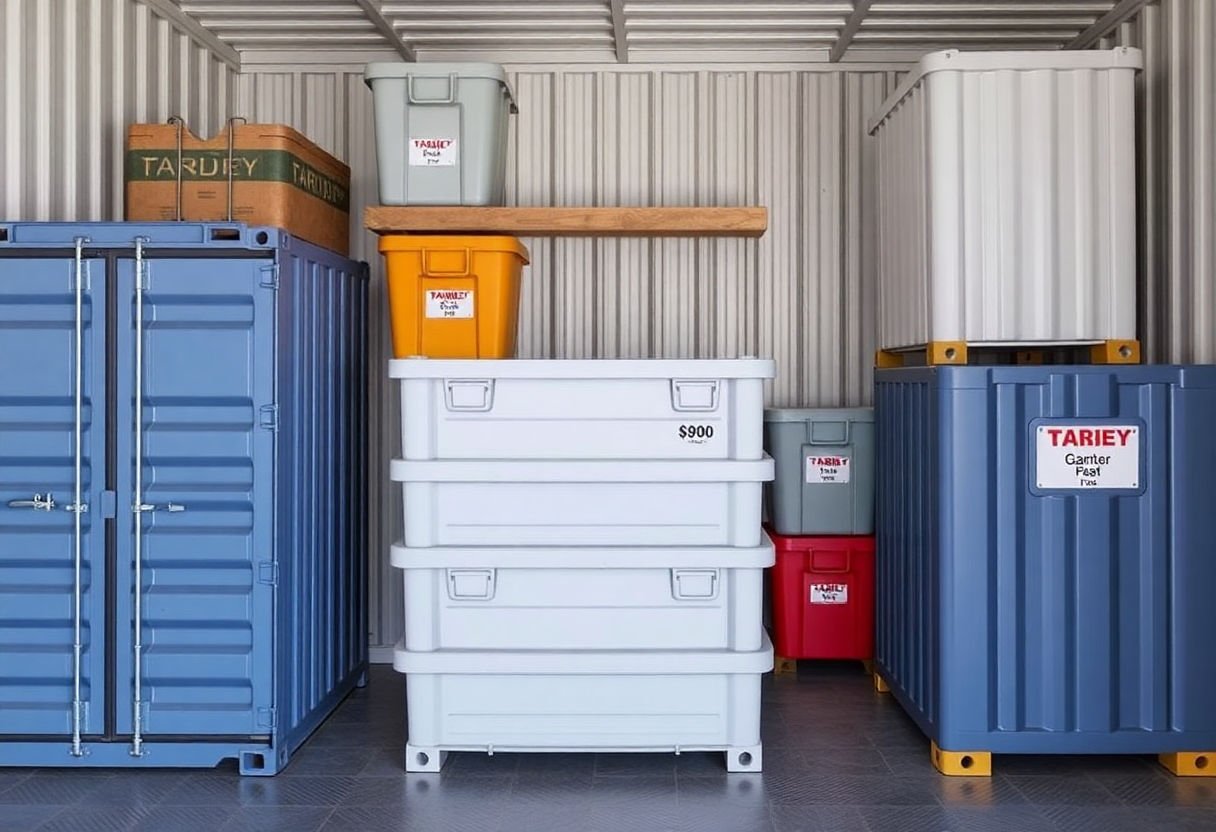
Choosing the right food prep storage containers from trusted brands can significantly enhance your food’s freshness and longevity. Here is an overview of some top brands known for their quality and reliability:
-
Rubbermaid: Renowned for its innovative designs, Rubbermaid offers a wide range of durable and spill-proof storage solutions. Their containers often feature secure lids with tight seals, ideal for maintaining food freshness.
-
Pyrex: Famous for its sturdy glass construction, Pyrex containers are a preferred choice for those who prioritize safety and durability. These containers are oven-safe and freezer-friendly, making them versatile for various storage needs.
-
OXO Good Grips: This brand stands out for its ergonomic design and attention to detail. OXO containers come with special locking mechanisms that provide an airtight seal, ensuring food stays fresh longer. Their stackable design is particularly useful for organizing kitchen space efficiently.
-
Lock & Lock: Known for their comprehensive sealing system, Lock & Lock containers are highly effective in preventing leaks and spills. This brand is ideal for carrying liquids and sauces without any worry of mess.
-
Ziploc: While primarily known for bags, Ziploc also produces versatile and budget-friendly container options. These containers are especially lightweight and convenient for quick food prep and storage.
With these brands, you can choose options tailored to your specific needs, whether it’s for temperature resilience, ease of use, or superior sealing properties. Investing in quality brands is essential for keeping your meals fresher for longer periods.
Maintaining and Organizing Containers
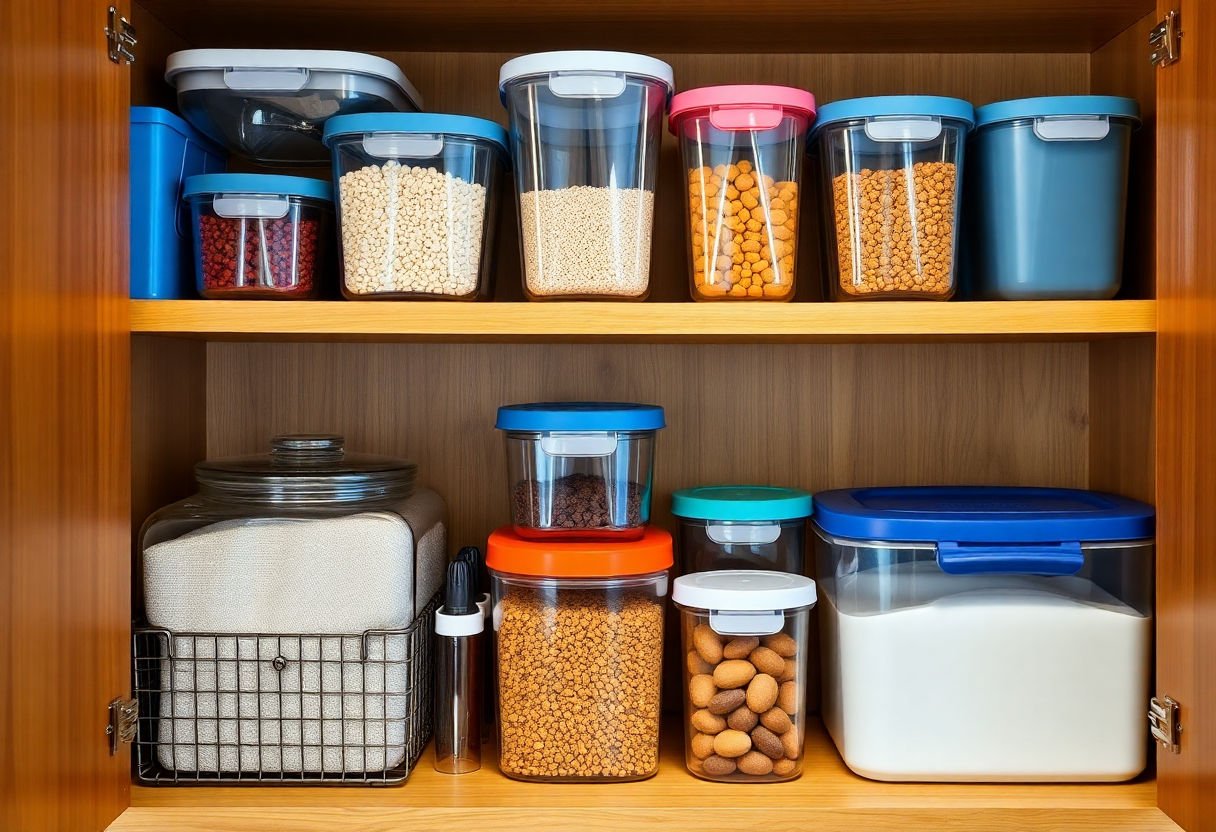
To ensure that your food prep storage containers remain effective and extend their lifespan, proper maintenance and organization are crucial. Keeping these containers clean is pivotal to preventing contamination and preserving the freshness of your food. Hand washing with mild soap and warm water is recommended for most containers, especially those made of plastic, to avoid warping or chemical reactions that could occur in a dishwasher. When using the dishwasher, make sure the containers are labeled dishwasher safe.
To combat stubborn odors and stains, consider using natural solutions such as a mixture of baking soda and water, or letting containers sit with a diluted vinegar solution. These methods are particularly effective for removing food odors and residues without the use of harsh chemicals that could degrade the material.
In terms of organization, storing your containers efficiently can save you time and space in the kitchen. Nest containers by size and keep lids and bases together to avoid the inconvenience of mismatched pairs. Investing in a storage rack or drawer for lids can simplify retrieval and further prevent disarray.
Labeling containers with contents and dates using dry-erase markers or removable labels can enhance organization and ensure you’re using the freshest food possible. This practice is especially beneficial for those who meal prep regularly.
Implementing these strategies not only streamlines your kitchen operations but also ensures that your food storage system supports optimal freshness and safety of your meals.
Eco-Friendly and Sustainable Options
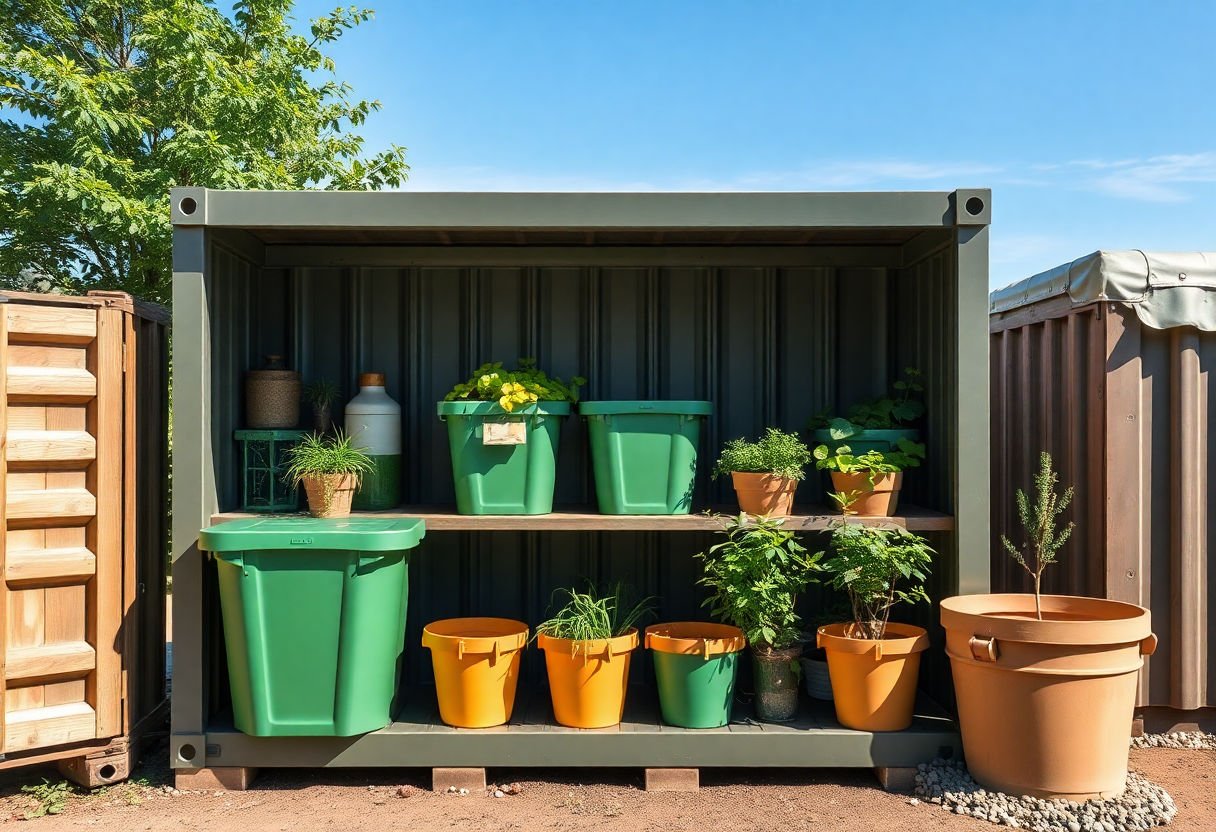
As awareness of environmental sustainability grows, selecting eco-friendly and sustainable food storage options becomes a priority. These alternatives not only contribute to a healthier planet but also offer practical advantages for maintaining food freshness.
Biodegradable Materials: Opt for containers made from biodegradable materials, such as bamboo or plant-based plastics. These materials break down naturally, reducing landfill waste and minimizing environmental impact.
Reusable Containers: Invest in durable, reusable containers. Glass and stainless steel are excellent options, as they can last for years with proper care. While they might have a higher initial cost, their longevity and reduced need for frequent replacements make them a cost-effective choice in the long run.
Recyclable and Reclaimed Materials: Choose containers crafted from recyclable or reclaimed materials. Products made from recycled components help lower resource consumption and energy use during manufacturing. Recyclable options further ensure that once their lifecycle ends, they can be processed and used to create new products.
Plastic-Free Alternatives: For those aiming to reduce plastic dependency, consider alternatives like silicone storage bags or beeswax wraps. Silicone is versatile and highly durable, offering a flexible solution for different food items. Beeswax wraps, on the other hand, provide a natural, breathable cover, ideal for wrapping produce or leftovers.
Transitioning to eco-friendly options not only supports environmental goals but also encourages a mindful approach to food storage, aligning daily practices with sustainable living.
Conclusion
Choosing the right food prep storage containers is crucial in maximizing freshness and maintaining an organized kitchen. By understanding the benefits and drawbacks of glass, plastic, and stainless steel, and selecting the appropriate sizes and sealing capabilities, you can preserve food quality effectively. Embracing eco-friendly alternatives further enhances sustainability efforts. As the market evolves with specialized designs and innovative materials, staying informed will empower you to make choices that align with both health and environmental priorities. Remember, investing in quality storage solutions not only extends food freshness but also promotes an efficient and environmentally-conscious kitchen lifestyle.
Frequently Asked Questions
How do I determine the best material for food storage containers?
Choosing the best material depends on your specific needs and priorities. Glass containers are durable and non-reactive, making them ideal for long-term storage and reheating, while plastic containers offer lightweight flexibility and often come in varied sizes. Consider your food storage habits, safety concerns, and environmental impact when selecting materials.
Are airtight containers necessary for food freshness?
Airtight containers are crucial for maintaining food freshness as they prevent air and moisture from entering, which can lead to spoilage. Selecting containers with secure airtight seals can significantly extend the lifespan of your food.
What sizes of storage containers should I have in my kitchen?
A variety of sizes is essential to accommodate different food types and quantities. Smaller containers are perfect for leftovers and snacks, while larger ones are suited for bulk items like grains and meals. Consider your usual meal prep habits when choosing sizes.
How can I ensure my containers are safe for use?
For safe use, ensure that your containers are free from harmful chemicals like BPA and are labeled as food-grade. Regularly inspect them for any signs of wear or damage, which could compromise their safety and effectiveness.
What makes a food storage container eco-friendly?
Eco-friendly containers are made from sustainable materials, such as recycled glass or biodegradable plastics, and are designed to reduce environmental impact. Opt for options that promote reusability and limit single-use waste to support sustainability.
